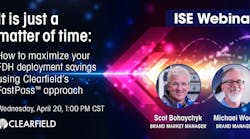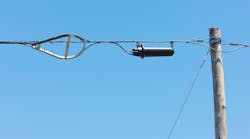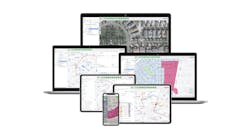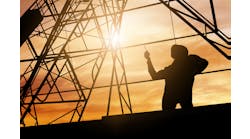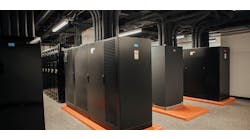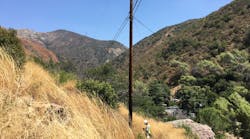Latest from C&E Best Practices
Pole Attachment Efficacy Requires…?
Leveraging Tools and Techniques to Minimize the Impact of Attachment Requests and Increase Trust
“Twelve above, forty below, and don’t be slow” was our motto. What it meant was to drill a hole in a pole twelve inches above the highest telephone cable and a minimum of forty inches below the lowest electric line unless you were in California where it was “forty-eight and don’t be late” and do it as fast as you can because we were getting paid by the foot.
As a cable TV construction crew, we constructed across the country through the 1980s and into the early 1990s. In 1996, a major revision of the telecommunications act spurred massive growth in competitive telecommunications services. The last part of the 90s was spent crisscrossing the country with fiber optic cables for the burgeoning competitive local exchange industry.
As linemen, we did not interact much with the electric utility or incumbent telecom company. An inspector would show up occasionally—sometimes we would be awestruck by an electric crew changing out a pole but, generally speaking, the electric company, pole-owner world seemed like the impenetrable kingdom of OZ. We did not know much about their culture, and they did not know much about ours.
There was, however, a team at the cable company responsible for submitting applications to attach to utility poles who interacted with the utility frequently. In early 2000, I suddenly found myself sitting on the other side of the fence as the Joint Pole Administrator for an investor-owned electric utility. It was in that role I realized that cultural differences and trust issues existed between the telecommunications industry and the electric utility that made the application processes challenging. That is precisely what needed to be changed if I was going to be successful in my new role.
“Equally important is understanding that the pole owner and licensee relationship is a partnership based on trust. Without that fundamental tool, all the technologies on the planet won’t help us join strengths to create the best result for the customers we all serve.”
The Challenges
At that time, mandates placed on some utility pole owners by the Federal Communications Commission (FCC) required utilities to provide non-discriminatory access by telecommunications providers. Unfortunately, these mandates created an atmosphere of distrust.
The first challenge for me was to persuade my electric company colleagues that facilitating fast, efficient access to poles was important to the community and could improve the company’s bottom line.
The second challenge was to show the electric linemen that most telecommunications linemen had the skill sets, pride in workmanship, and safety culture that the electric lineman held in high regard. Fresh out of the telecom construction industry and proud of our accomplishments, I believed this to be true.
The pole owner (licensor) and the attacher (licensee) relationship can be broken down into two general categories:
- Contractual obligations which include the legal terms, application process, fee structure, and general oversight.
- Operational engagement of construction practices including planned and emergency maintenance.
I noticed three processes were causing friction:
- Effective coordination for emergency pole replacement or transfer work.
- Several code violations.
- Construction practice issues that delayed attachment licensing.
The Solution
The keys to any successful business relationship are all about respect. The other principal to a mutually beneficial relationship is the old saying, “Knowledge is power.” The baseball player, Sadaharu Oh, considered by many as the greatest player in Japanese baseball, was once asked about his philosophy on competing against opposing players. “The opponents and I are really one, my strength and skills are only half of the equation. The other half is theirs. An opponent is someone whose strength joined to yours creates a certain result.”
In my situation, face-to-face events increased trust-building between reps from both the electric and telecommunications industry. Some of these included:
- Monthly joint pole committee meetings with representatives from both.
- Quarterly lineman safety breakfast attended by both electric and telecommunications linemen.
- Annual National Electrical Safety Code (NESC) training session facilitated by a third party.
These engagements helped each organization better understand the ground rules and, most importantly, have a better understanding of the culture of the other industry. These meetings helped reduce the friction and distrust.
That was just the first step. Ongoing operational improvements were necessary because as soon as we all got comfortable, along came another fiber provider to the market.
Soon after, we were discussing wireless attachments and requests to attach in the supply space which made requirements even more complex. These different types of attachments required both parties to be cognizant of pole loading analysis, make-ready engineering and worker safety—especially when working around radiating antennas and in the energized supply space.
In addition to developing a good working relationship, it became apparent that more operational effort was needed. The answer appeared to be in technology, and a joint effort was launched to ensure both parties could meet their objectives.
- Telecom objectives included speed to market, reliability, and low capital expenditure costs. These would create a sustainable business and be competitive.
- Utility companies needed to recover all incremental costs related to that effort. The electric utility also needed to make the process as seamless as possible using minimal internal resources so they could continue to focus on delivering reliable electric power.
To meet these objectives, we broke the process into several phases:
- Phase one included performing a joint audit of the existing pole attachments and distribution equipment. The audit collected GPS information for each pole and identified ownership of existing attachments, the heights of those attachments, and any issues of non-compliance with existing standards and the NESC. The information collected was converted into a digital format which became the basis for each company’s electronic mapping programs. The costs for the audit were shared between the electric company, the incumbent telecom provider, and the cable TV company. Each company received the data that was collected by the company that was contracted to perform the audit.
- The second phase was remediating the non-compliance issues noted during the audit. Much of the remediation was accomplished jointly and the results were tracked in the monthly joint pole meeting. An unintended benefit of remediating the non-compliance issues was increased interaction between industry field personnel which improved communication and allowed for better collaboration during other joint pole field work.
- Another healthy step in the process was standardizing pole loading software. This was necessary so everyone would be following the same playbook.
- Automating the attachment application process was also critical. And while the early stages of that automation was rather rudimentary, it opened doors for today’s innovative technologies that make pole line engineering more accurate and efficient.
Trust Remains Paramount
These tools and technologies facilitate shared knowledge that helps build trust between telecom providers and utility providers. This is critical as our industry embarks on an unparalleled quest to bring broadband to every American.
The current ongoing effort to eliminate the digital divide is fueled by governmental funding and rapid technology change. As broadband providers, you will interact with utility pole owners who themselves will be faced with new challenges. Understanding pole owner requirements, best practices and culture, and knowing the tools and services available to you will help facilitate fast, efficient, economical broadband deployments.
Today’s LiDAR technologies and GIS portals can help you and your utility counterparts be efficient, improve customer satisfaction, and stay in compliance with regulations, codes, and contractual obligations. This is important because regulations require that certain utilities respond expediently to pole attachment requests and because the billions of dollars in funding from the federal government are tied to certain obligations and commitments to build-out in a specified time frame.
Equally important is understanding that the pole owner and licensee relationship is a partnership based on trust. Without that fundamental tool, all the technologies on the planet won’t help us join strengths to create the best result for the customers we all serve.
ABOUT THE AUTHOR
Ron Bilodeau is Director, Strategic Solutions, Osmose Utilities Services. He has more than 40 years of experience in both telecommunications’ construction and electric utility operations management. Ron earned an MBA and has a BA in Communications and Management from the University of Nevada Las Vegas. He is a College Business professor and a Certified Project Management Professional. Ron provides solutions and recommendations to the utility and broadband industries on a wide-ranging scope of requirements.
For more information, please email [email protected] or visit www.osmose.com. Follow Osmose on LinkedIn: company/osmose and Facebook: osmoseutilitiesservices.

Ron Bilodeau
Ron Bilodeau is Director, Strategic Solutions, Osmose Utilities Services. He has more than 40 years of experience in both telecommunications’ construction and electric utility operations management. Ron earned an MBA and has a BA in Communications and Management from the University of Nevada Las Vegas. He is a College Business professor and a Certified Project Management Professional. Ron provides solutions and recommendations to the utility and broadband industries on a wide-ranging scope of requirements.
For more information, please email [email protected] or visit www.osmose.com. Follow Osmose on LinkedIn: company/osmose and Facebook: osmoseutilitiesservices.
